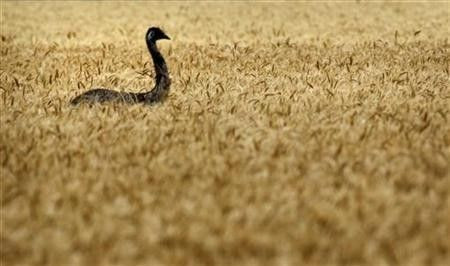First 'Almost Complete' Egg Of Now-Extinct Dwarf Emu Discovered
KEY POINTS
- There are not many records available on the now-extinct dwarf emus
- Scientists discovered the first "almost complete" King Island emu egg
- Analysis showed the emu eggs were large in size
Researchers have found an "almost complete" egg of an extinct dwarf emu and they hope the discovery will shed more light on the mysterious creatures.
Emus are the second largest birds after ostriches. They are flightless creatures that can only be found in Australia, Phys.org said. Apart from the emus on the main island, smaller versions of the birds, called dwarf emus, were also once present in the islands off southern Australia. These emu subspecies include the Kangaroo Island emu (D. n. baudinianus), the Tasmanian emu (D. n. diemenensis) and the King Island emu (D. n. minor), with the latter being the smallest.
It's possible that these emus shrank in size because of lack of resources. The King Island emus, for instance, were an average of 44%-45% smaller than the mainland emus, researchers of a new study, published in Biology Letters, said. The Kangaroo Island emus and Tasmanian emus were 25% and 10% smaller than mainland emus.
These birds, however, "rapidly" went extinct after the arrival of human settlers.
"All were victims of over-hunting by human colonists," the researchers wrote. "Little was recorded about their life histories and only a few historical museum specimens exist, including a number of complete eggs from Tasmania and a unique egg from Kangaroo Island."
The researchers discovered the first "almost complete" egg in a sand dune on King Island. They did a detailed analysis of it and compared it with other emu eggs, including 38 mainland emu eggs, six intact Tasmanian emu eggs and a "unique" Kangaroo Island emu egg that was collected in 1834.
Similar-sized eggs
Interestingly, despite the birds being much smaller than the mainland emus, the egg was actually similar in size, although lesser in mass and volume. The eggshells were also "slightly thinner."
The reasons behind this are "less clear," the researchers said. But they provided some possible explanations.
"This was a response to reduced resources and harsh environmental conditions on their respective island homes, where evolution likely favored larger emu chicks that were relatively mature and mobile at hatching, and could immediately forage for food and maintain body heat to combat cold," the researchers said in a media release.
It's possible that the emu chicks had to stay in their shells for a longer period until they could forage on their own, Phys.org noted. The larger shells allowed them to do that and also kept them warm.
"This scenario provides an interesting evolutionary response to insular environmental conditions in dwarf emu breeding strategy, but due to their complete and rapid extinction, the true extent of these adaptations is now impossible to determine," they added.
The King Island emu, for instance, has been extinct for about 100 years. Unfortunately, a previously discovered fossil-rich site on the sand dunes was destroyed to create a golf course, the Australian Geographic said.

© Copyright IBTimes 2025. All rights reserved.





















